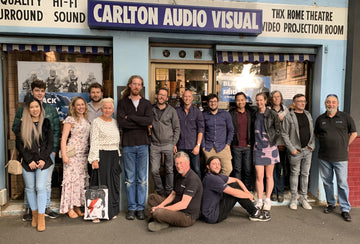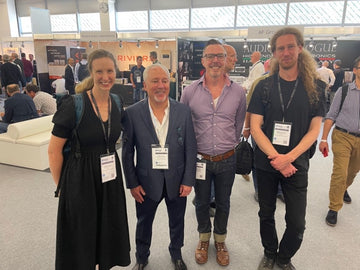HiFi: The last bastion of misogynism?
It’s a sad set of facts, and peculiar at that, that the overwhelming majority of high end HiFi customers and floor staff are male. Since it was International woman’s day last Sunday, I thought I would share a bit of my perspective working in HiFi, as a woman.
I think women feel socially excluded from HiFi in a similar way that they feel wearing pink is effeminate. It’s an assumption that we’ve all grown up with - technical things, wire and electronics are the male domain. I’ve heard some arguments that women don’t enjoy sitting and listening to music as much as men. Let me make it very clear women enjoy music just as much as men. If they didn’t, we’d see similar gender disparity in CD sales, digital music sales and in the live music industry and that’s not the case. Women consume just as much music as men.
In the general electrical consumer goods market, this disparity is also not as acute. Women buy the newest and the best mobile phones and they buy the best computers. Even in the car industry, women buy into the higher echelon of the market more so than in the HiFi industry. So why are things so different in HiFi?
It may be a shortcoming of the HiFi industry’s marketing strategies. A trend I’ve noticed in HiFi advertising targeting women – of which there’s not much around – is that the products purveyed are “stealth” products. They’re speakers that hide in the walls, are small satellite speakers or don’t look like speakers at all. Instead they look like strange contemporary art contraptions that might, when the lights are out, turn into a weird alien being and eat everything in your fridge…
What’s being fed to women then, is a message that it’s better if your stereo system is hidden. Why aren’t the expensive, larger speakers marketed to women as a high-end product that they proud to have in their homes and to show off front and centre in their living rooms? This is, of course, a case of the chicken or the egg. Is the marketing a result of the disinterest from the female consumers or the disinterest a result of the marketing? The HiFi industry hasn’t traditionally been very good at breaking this industry standard.
Also, not having many women working in the industry, talking to customers doesn’t help either. It’s not that women need to buy HiFi from women. It’s that without females at the point of sale, it seems like an intrusion into an all-boys club and can feel uncomfortable for women even to set foot into the store.
There are CE companies that are trying to do something to include women in different aspects of the industry. JB HiFi mandated a policy in 2012 to increase their gender diversity. But by 2014, they hadn’t achieved their goals. This is again the chicken and the egg dilemma. It’s hard to employ women in HiFi if there aren’t women who are knowledgeable and enthusiastic purveyors of the products. However that’s not a justification to leave the status quo as it is. Even though JB didn’t hit it’s targets of gender diversity, they have nevertheless increased the percentage of women in their ranks and have implemented other strategies to try to encourage women to apply for jobs in their stores.
Changing tactics in this way to include women in Hifi from the buying process to the management ranks will help the industry as a whole. It is, in the end, 50% of the population that is grossly underrepresented and unengaged with the industry.





